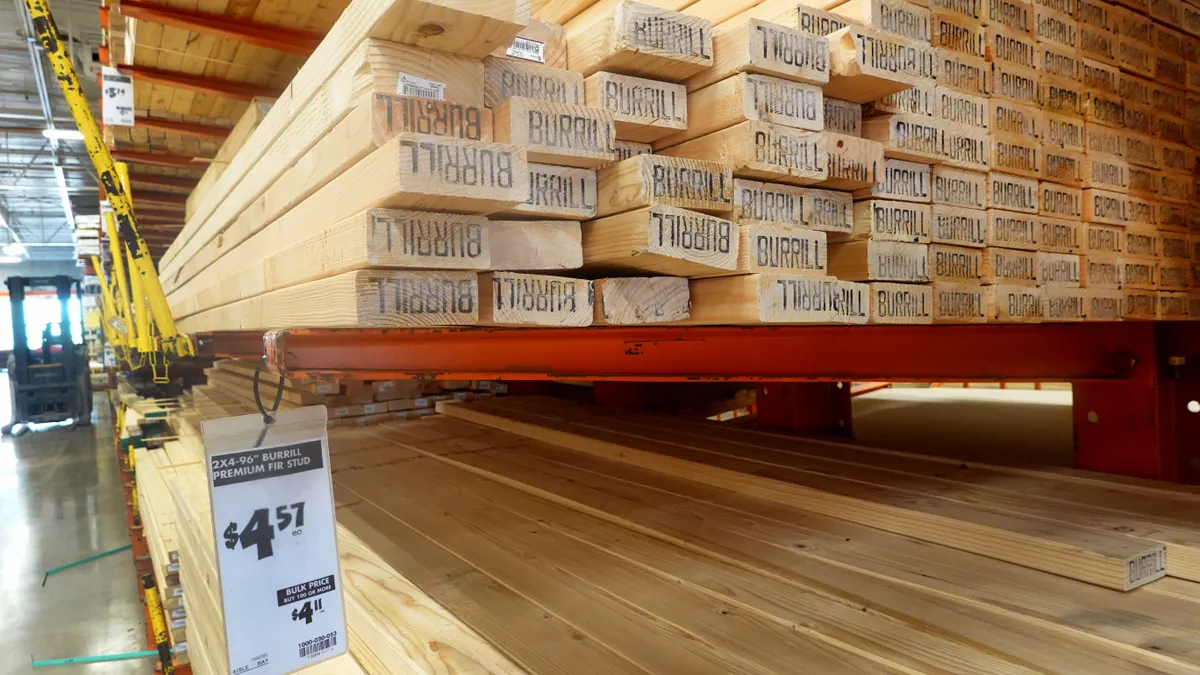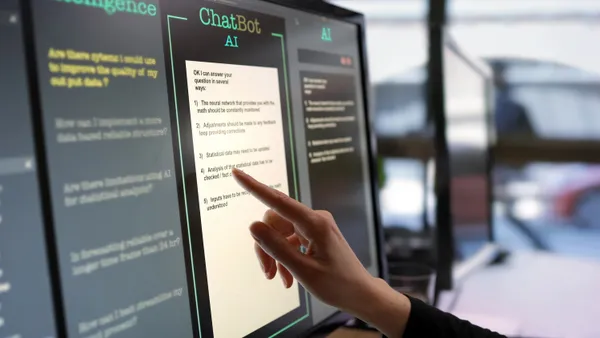Milford, Mass.-based construction company Consigli recently partnered with Rugged Robotics of Houston on a pilot to use small robotic vehicles to do the field layout of a 240,000-square-foot life sciences building.
The robotic vehicles feature integrated print heads that enable them to mark fully coordinated designs directly onto concrete floors. The robots can print more information than typically seen with manual layouts, reduce time spent reviewing plans and create faster, more precise installations, according to a press release.
Consigli plans to continue collaborating with Rugged Robotics to unearth new applications for robotic vehicles on construction jobsites, and already has ideas about new ways to leverage the technology, Jack Moran, director of VDC and integrated services for Consigli, told Construction Dive.
Field layout is traditionally undertaken with tape measures and chalk lines, but the Consigli-Rugged pilot introduced a far more automated approach, Moran said. After project drawings were uploaded into the system, robotic vehicles rolled around the jobsite marking the layout onto the floor slabs.
"On that job, you would have seen the layout of walls and doors, and hanger locations for mechanical piping and fire protection," Moran said. "You would have seen marks representing the hanger locations, the type of wall and water supply or drains."
A construction background
Moran described the decision to partner with Rugged Robotics as a "stars aligning" type of scenario. Consigli continually studies technologies and uses a pragmatic approach to decide what could help the company build more efficiently, safely and with greater quality. Company CEO Anthony Consigli recently asked Moran whether layout was one area that could be improved by using robotics. Not long after, Moran met Derrick Morse, co-founder and CEO of Rugged Robotics. Though based in Texas, Morse had grown up in Massachusetts, and has a construction background.
"There are many technology companies looking at construction as fertile ground," Moran said. You can tell when people are more technology [than construction focused]."
"But Derrick was really coming from the industry and speaking about real problems he knew we needed to solve ... We decided we wanted to have him in the field, where he could test out his ideas on a real jobsite. A year and a half, two years of having him talking to our people and visiting our jobsites helped us arrive at a solution that would solve a real-world problem. He’s been able to test his ideas in real-world conditions."
Robot jobs beyond layout
The pilot Consigli and Rugged recently completed is likely to be just the first of many projects to come. Moran believes there are many potential construction industry jobs for robots. They can do quality control checks and autonomously move construction materials around jobsites. They are now able to move dirt and handle grading. In the not-too-distant future, they are also likely to perform higher-risk work that safety-minded construction companies would prefer not to assign to humans.
"I like to think we’re leading-edge, but we’re not the only one in the industry thinking of technology," Moran said. "There’s lots of room for robots. Like many industries, construction faces labor shortages, and industry forecasts point to that only becoming worse. There will always be resistance to change. But you can point to a number of advancements our industry was slow to embrace that are now on Main Street. Things people looked at you sideways about are now commonplace."












